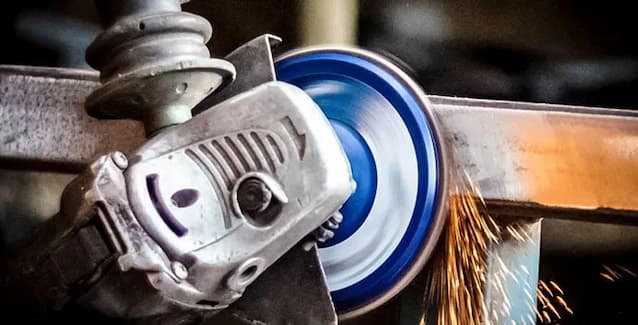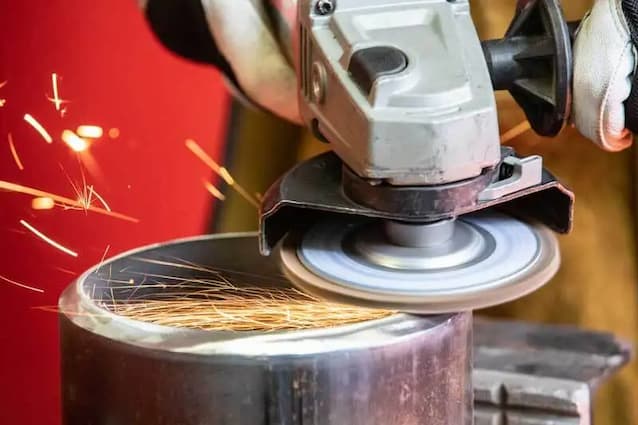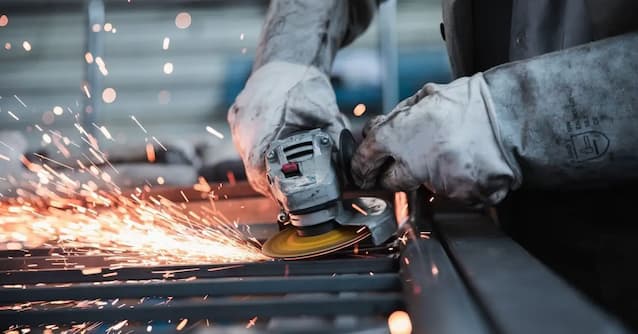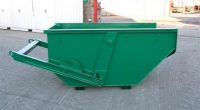Unveiling the Power of Abrasion: Choosing the Right Flap Discs for Steel Welding Excellence
Posted by Alex Green | On 19 March,2024 | In Industrial Supplies & Services In the intricate world of welding, precision and finesse are paramount. Achieving a polished, professional finish requires the right tools, and abrasive flap discs stand as indispensable companions for welders. These versatile discs, designed for material removal and finishing, play a crucial role in shaping the final product.
In this comprehensive exploration, I will delve into the importance of abrasive flap discs in welding, understand the factors that differentiate them, and specifically focus on the ideal flap discs for steel welding.
The Significance of Abrasive Flap Discs in Welding

Material Removal and Finishing
Welding leaves behind imperfections and excess material that must be meticulously addressed for a flawless final product. Abrasive flap discs, with their grinding and finishing capabilities, excel in the crucial tasks of material removal and smoothing surfaces. From weld seams to sharp edges, these discs contribute to refining the workpiece with precision.
Versatility in Application
One of the defining features of flap discs is their versatility. Whether used for deburring, blending, or polishing, these discs can adapt to a wide range of tasks. Welders can seamlessly transition between different stages of the welding process, ensuring a comprehensive approach to achieving the desired finish.
Time and Cost Efficiency
The efficiency of abrasive flap discs translates into time and cost savings for welders. With the ability to tackle multiple tasks in a single operation, these discs streamline the workflow, allowing welders to accomplish more in less time. The cost-effectiveness of flap discs makes them a go-to choice for professionals aiming to optimize their resources.
Choosing the Right Flap Discs for Different Types of Metal Welding

Understanding Flap Disc Grits
Flap discs come in various grits, each serving a distinct purpose in the welding process. Coarser grits, such as 40 or 60, are ideal for heavy material removal and shaping. Medium grits, like 80 or 120, strike a balance between material removal and finishing. Finer grits, such as 180 or 240, excel in polishing and achieving a smooth surface. Understanding the requirements of your welding project helps in selecting the appropriate grit for the task at hand.
Backing Material
The backing material of a flap disc plays a crucial role in its durability and performance. Fiberglass, plastic, and metal are common backing materials. Fiberglass-backed discs offer flexibility, making them suitable for contoured surfaces. Plastic-backed discs are lightweight, while metal-backed discs provide extra strength for heavy-duty applications. Choosing the right backing material depends on the demands of the welding project.
Flap Disc Shapes
Flap discs come in different shapes, including flat, conical, and T29 (angled). Flat discs are suitable for flat surfaces, while conical discs are designed for contouring and blending. T29 discs are versatile, allowing both grinding and finishing on flat and angled surfaces. The choice of shape depends on the specific requirements of the weld and the geometry of the workpiece.
Zirconia vs. Aluminum Oxide Abrasives
The abrasive material used in flap discs significantly influences their performance. Zirconia and aluminium oxide are two common abrasives. Zirconia is known for its durability and long life, making it suitable for heavy material removal. Aluminium oxide, on the other hand, offers a softer cut and is ideal for lighter tasks. The choice between these abrasives depends on the intensity of material removal required for the welding project.
Flap Discs for Steel Welding: Tailored Excellence
Abrasive Flap Discs for Steel
When it comes to welding steel, the demands on abrasive flap discs are distinctive. Steel, with its durability and versatility, requires flap discs that can effectively address its characteristics. Flap discs designed specifically for steel welding are crafted with the right combination of grit, backing material, and abrasive to ensure optimal performance in material removal, blending, and finishing tasks.
Choosing Grits for Steel
For steel welding, the selection of flap disc grits depends on the specific stage of the welding process. Coarser grits, such as 40 or 60, are effective for heavy material removal, especially when dealing with weld seams and excess metal. Medium grits like 80 or 120 strike the right balance for blending and shaping, while finer grits like 180 or 240 contribute to achieving a smooth, polished finish on the steel surface.
Backing Material for Steel
Given the robust nature of steel, flap discs with a durable backing material are essential. Metal-backed discs, known for their strength and stability, are well-suited for heavy-duty steel welding applications. The added support ensures that the flap disc maintains its integrity, even when subjected to the challenges posed by welding steel.
Zirconia Abrasives for Steel
Zirconia abrasives are particularly effective for steel welding. The toughness and durability of zirconia make it adept at handling the hardness of steel, ensuring efficient material removal and extended disc life. Flap discs with zirconia abrasives are tailored to meet the demands of steel welding, providing a consistent and reliable performance throughout the project.
Considerations for Optimal Flap Disc Performance

Appropriate RPM Rating
Matching the rotational speed of the flap disc to the grinder’s recommended RPM is critical for optimal performance and safety. Exceeding the maximum RPM can lead to premature wear and potential safety hazards. Always check and adhere to the RPM rating specified for the flap disc.
Cooling and Lubrication
While abrasive flap discs are designed to generate heat during use, excessive heat can affect their performance and longevity. Adequate cooling and lubrication, achieved through intermittent breaks and the use of water or lubricants, help manage heat buildup, ensuring consistent performance and prolonging the life of the flap disc.
Proper Storage
Flap discs should be stored in a cool, dry environment to prevent moisture absorption and potential degradation of the abrasive material. Storing flap discs away from direct sunlight and extreme temperatures helps maintain their effectiveness and extends their shelf life.
Conclusion
In the dynamic world of welding, achieving precision and excellence is a continual pursuit. Abrasive flap discs emerge as indispensable tools, offering a versatile solution for material removal and finishing tasks. Choosing the right flap discs involves considering factors such as grit, backing material, abrasive type, and shape, tailored to the specific demands of the welding project.
For steel welding, flap discs designed with durability, strength, and efficiency in mind ensure optimal performance. Whether it’s tackling weld seams, blending surfaces, or achieving a polished finish, flap discs for steel welding are engineered to meet the challenges posed by this robust material.
As you embark on your welding projects, understanding the nuances of abrasive flap discs and making informed choices based on the unique demands of your work ensures that your final product not only meets but exceeds expectations. With the right flap discs in your arsenal, the art of welding transforms into a seamless and precise endeavour, leaving you with impeccably finished results.
Related Posts
About Author
alex
?You can always edit a bad page. You can’t edit a blank page.Likes: ❤️ Beer ?, Pizza ? Dislikes:? Mice?, Barber ?Favorite song: ? Hurts - Wonderful Life



